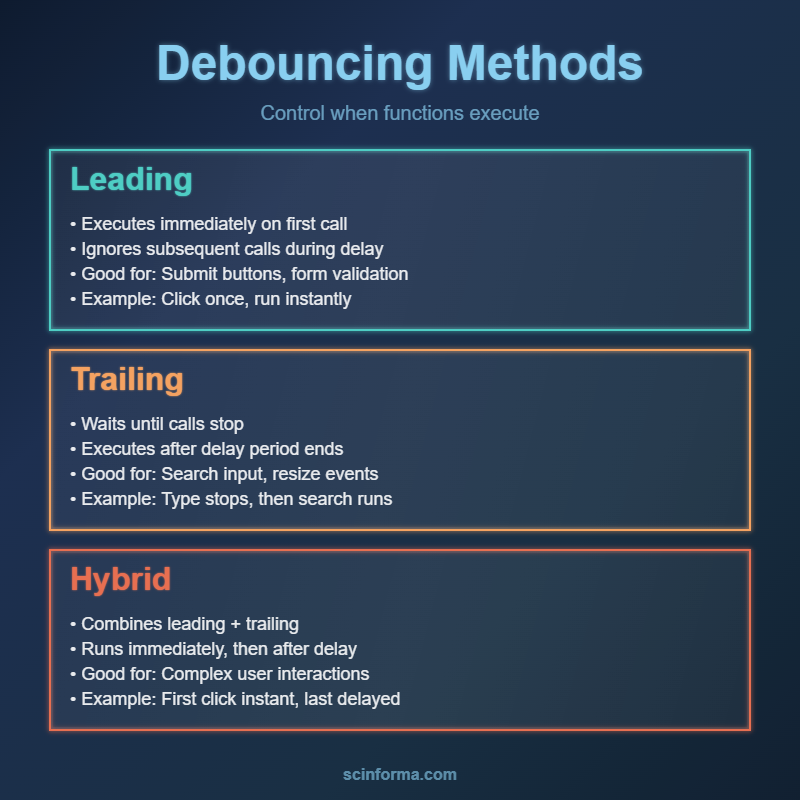
Software Engineer
Applying Debouncing in Real-World API Integrations

Recently I had a good case to apply debouncing, when working on a project syncing invoice data from Procore to QuickBooks
Procore fires invoice-update webhooks extremely fast, but I only needed the final stable version, not every draft change. This is where debouncing becomes essential.
Where debouncing comes from
Debouncing originally comes from electrical engineering. Mechanical switches “bounce,” producing multiple noisy signals when pressed. Engineers had to filter this noise to get one clean event — and software later adopted the same idea.
Three useful debouncing patterns
Leading debouncing: trigger on the first event
Example: auto-suggestion boxes that show results immediately on the first keystroke while ignoring rapid follow-ups.
Trailing debouncing: trigger after things settle
Example: search bars that wait until typing stops before running a query.
This is what I used for Procore-to-QuickBooks updates: collect rapid webhook bursts, sync only when the invoice stops changing.
Hybrid debouncing: trigger at the start and at the end
Example: file uploads that show an instant “file received” message (leading) and then process the file only when the upload fully stabilizes (trailing).
Why debouncing matters
Debouncing is a simple pattern, but it can dramatically:
- Clean up noisy event streams
- Reduce wasted API calls
- Keep integrations stable
In practice, it allows engineers to focus on meaningful events rather than reacting to every transient change.
I regularly share hands-on engineering insights from real projects. If you’d like more content like this, consider following.
- #debouncing
- #api
- #integration
- #procore
- #quickbooks
- #softwareengineering
Hello! How can I help you today?
 Virtual Chat
Virtual Chat- Hello! My name is VirtuBot. I am a virtual assistant representing Nazar. You can ask me questions as if I am Nazar.12:36 AMTell me about yourself?
